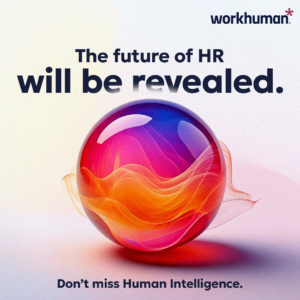
From Complexity to Clarity: Modern HR for Midmarket Growth
Sponsored by SAP SuccessFactors. Most weeks, you’ll find me on the road visiting customers, joining partner events, and connecting with our SAP teams around the

Sponsored by SAP SuccessFactors. Most weeks, you’ll find me on the road visiting customers, joining partner events, and connecting with our SAP teams around the

Sponsored by Workhuman. In recent years, we have seen a confluence of macroeconomic trends and seismic shifts in workplace dynamics that have profoundly impacted company

I’m always excited about live events. There’s something irreplaceable about people coming together to celebrate, to bond, to experience. The sense of community is priceless

No matter your role or position in an organization, you may have experienced being micromanaged at one point or another. We all know it’s never

Sponsored by SAP Concur Human resource (HR) departments play a crucial role in corporate travel programs: They’re the intermediary between a company and its employees

Sponsored by SAP Concur In the past 12 months, more than 30 million flights have been booked in Concur Travel. Although every organization has its

I’m just going to come out and say it: the SAP SuccessConnect 2024 (October 28-30) was a blast. Why? For one thing it reminded me

Sponsored by ExecOnline Today’s leaders face mounting and unprecedented changes in nearly every aspect of their roles. From managing a hybrid workforce to adopting new

Turning the corner to fall, there’s so much HR news to dive into. These four reads caught my attention. They’re all compelling takes on today’s

Longtime CHRO Ellyn Shook announced her retirement, sharing 3 key observations about her changing role. A recent C-Suite survey proves her right. This July, Ellyn

When we join a company, we really are entering into a relationship. Most of us learn to love or at least tolerate our company even

Dive deep into these four realities of Gen Z to boost hiring, engagement, and retention. This year the oldest members of Generation Z (born between

Sponsored by ExecOnline In today’s fast-paced business landscape, companies are contending with frequent organizational shakeups brought on by ever-changing economic conditions, market shifts, and the

As we navigate the changing landscape of today’s modern workplace, two trends stand out as critical for the future of human resources. The shift towards

In the ever-evolving job market, hiring managers and recruiters are on the lookout for standout skills that set candidates apart. From highlighting proactivity and agility

Recently, I coached a professional juggling multiple responsibilities: pursuing a PhD, working full-time, being a dedicated sports parent, and seeking their next career opportunity. They

The U.S. maternal health crisis is getting worse, with far too many women struggling to find necessary maternity care. This problem is most severe in

We’ve all seen the headlines. Dystopian predictions about the long-term economic impact of artificial intelligence (AI) continue to dominate the news. But what do people

Generative AI has been available for little more than a year. However, it’s already redefining recruiting, as job-seekers race to find and land new career

Imagine you discover an ideal job opportunity. You have the skills, drive, and vision to excel in this role. However, barriers invisible to others are

Productivity metrics were essential 100 years ago, during the manufacturing age. At that time, organizations measured success with metrics like hours worked, revenue per employee,

There’s nothing like having skin in the game to keep you focused, motivated, and engaged. Just ask any business owner. This logic extends to employees,

Sponsored by: Cornerstone Learning is the most important thing we do at work. I know that’s a bold statement. I’m sure you’re already trying to